#brick and limestone
Explore tagged Tumblr posts
Photo
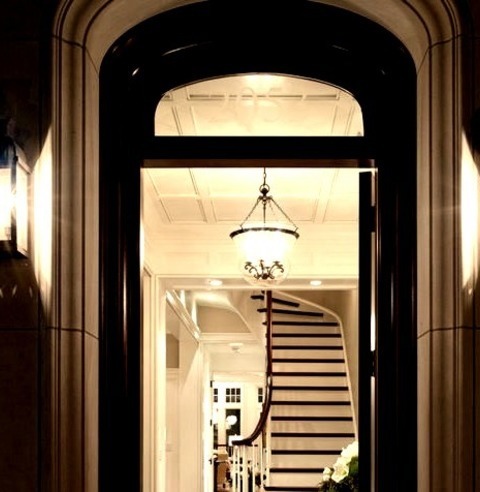
Chicago Brick A large, elegant brown home with a three-story brick façade.
4 notes
·
View notes
Photo

Chicago Exterior Stone Large traditional brown three-story stone exterior home idea
1 note
·
View note
Photo

Chicago Rooftop Deck Example of a large classic rooftop rooftop deck container garden design with a pergola
0 notes
Photo

Deck - Rooftop Example of a sizable traditional rooftop deck with a container garden and a pergola
0 notes
Photo

Patio Natural Stone Pavers Mid-sized elegant courtyard stone patio photo with no cover
#master suite courtyard#plant beds#brick patio#clipped gable roof#traditional courtyard#brick and limestone
0 notes
Photo

Deck - Rooftop
#Example of a sizable traditional rooftop deck with a container garden and a pergola rooftop deck#brick and limestone#outdoor seating#outdoor fireplace#ceiling fan#parapet#pergola
0 notes
Text

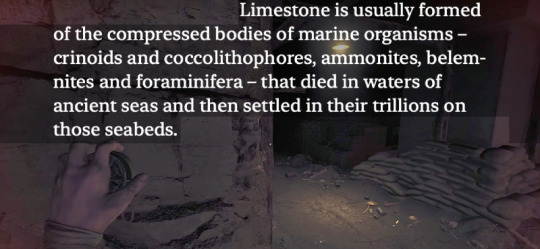


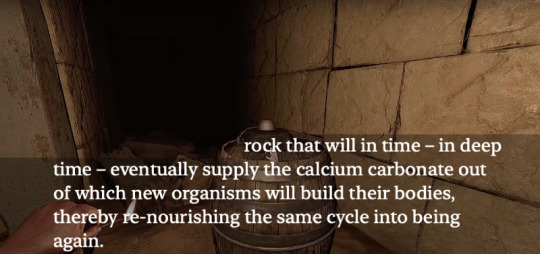
This dance of death and life that goes into limestone’s creation is what makes it without doubt the liveliest, queerest rock I know – and the human burials it holds have sometimes echoed these vibrancies, and the multi-species makings that have brought limestone into being.
Robert Macfarlane, Underland: A Deep Time Journey
#amnesia rebirth#amnesia the bunker#limestone my gothic princess beloveddddd <333 she has the range <333#using henri and tasi as my little martian rovers like get me closer to that rock boy ignore the creepy sounds that's not as important rn#also tried scouting brennenburg b4 learning prussian castles are mostly brick-based.so maybe daniel is as useless as herbert suggested asdf#the fossilized rose garden
34 notes
·
View notes
Text
holy shit this is long... tldr; I get neurodivergent over masonry
So I've been doing a lot of research on building methods, from the conventional to the old school to the new, and one thing I always found missing from older methods (as in basically anything that isn't either solid concrete or stick-frame) was the lack of hard, impassable moisture barriers on exterior walls. Surely a wall that looks like old red brick on the outside and inside must have more layers in between, right? Where's the housewrap? Where's the bitumen or tar paper? Pretty much all old-school roof materials I've seen have had some sort of waterproof layer under the shingles, but never the walls, floors nor foundations themselves.
Now, I live in a town with a lot of 100 year old buildings, which isn't that old but still predates the prevalence of the 2x4 and the popularization of plastic. I've been in many buildings where the walls on the inside are seemingly the same clay brick material as the ones on the inside. My grandma's basement was seemingly made from assorted stone, and I've seen many basements with walls of brick or cinderblock. Despite the inherent porosity of their materials, these walls hold strong through the harsh Canadian winters and the soggy spring thaw, the wood and plaster up against them free from water damage or mold. It felt impossible. Surely there was something I wasn't seeing, right? Surely you can't just build a 2-whyte brick wall with an air gap in between and some drainage holes and just have it work, right? Where's the mould? Where's the mildew? Where's the water damage, and crumbling from repeated freeze-and-thaw cycles?
I was unable to find a straight answer, despite the fact that I was obviously missing something. You can't just stick insulation, plasterboard and framing joists up against a brick wall that's exposed to outside air on the other side, right? Surely it will rot!
The only things I was able to find were synthetic sealing creams that make things hydrophobic, and something about a metal "dimple sheet" that required you to "decouple" the roof joists from the walls to install it, because it was simply assumed that you'd be installing the product in a preexisting brick house. Both of these things were obviously modern, and heavily flawed as products. The sealants needed reapplied every 5 years and didn't even provide full protection, and the metal sheet, once installed, required that no wood any longer touch the bricks as it would somehow become guaranteed to rot. This isn't even what I wanted to know. How did people 100 years ago build the buildings I know I've stood in, where the bricks were free from chemical sealants and physical moisture barriers yet didn't let the rain in?
Finally, after posting to a masonry forum, I recieved my answer.
There is no secret ingredient.
The exterior layer of bricks simply get wet when it's wet and dry out when it's dry.
Limestone is naturally antifungal and antibacterial, so mold simply cannot grow on materials made from it. Lime plaster allows water vapour to pass through it, yet resists actual liquid water, so at once water cannot become trapped within it and fester, but applying a lime stucco to exterior walls or a plaster to interior ones prevents leakage while allowing water vapour in the air to pass through, and thus the house to "breathe." Additionally, old insulation "fluff" that is now made from foam or fibreglass was then made from wool, which is also naturally antibacterial. And wood, of course, can simply be sealed to prevent decay with a multitude of different methods, if that's even needed, which it often isn't unless it's actually touching a surface that can be expected to routinely become moist.
Old buildings simply weren't built with absolute airtightness in mind. There's no one layer that's 100% moistureproof in an old exterior wall; even water repellant surfaces such as lime stucco allow humidity to pass through. There's no hydrophobic layer of tarpuline, rubber or tar anywhere but on the roof.
Dudes, I'm starting to realize that modern stick-framed housing insulated with pink fiberglass and made of pine, chipboard and plastic wrap... kind of sucks? Like, they have their advantages surely, they're immensely easier, quicker and cheaper to build, and way easier to heat/cool, but they're also flimsy and, quite ironically, actually MORE prone to mold than old school buildings, because once the housewrap under that vinyl siding, stone block veneer or board-and-batten starts to go (and it will eventually), it's a single point of failure, and everything behind it is prone to rot? And if moisture does seep in, it has no way to escape due to the moisture-tight, airtight quality of the home, so it has no choice but to fester? Like, think about taking a hot shower, and the steam that builds up, only removable from the home with a modern HVAC fan or by opening a window. Think about how, if you don't do one of those things, you're all but certain to get mold on the drywall. That's because of the lack of vapour-permeable materials! It simply can't pass though any exterior wall, back outside into the air! The air is stagnant by default!
And look, this is not me claiming that stick-frame is inherently bad, or that old style building methods are always better. Back then they put asbestos in the walls and lead in the pipes, paint and windows. Technology has moved forward, not back, and is continuing to move forward, becoming better, stronger, more efficient. But when the modern home uses housewrap and housewrap alone as waterproofing, it's hubris manifest. It's a sheet of plastic screwed to some plywood with a wide washer. Eventually, there will be a leak, inside or out, and once that happens you're all but guaranteed destructive rot and mold. It's a tradeoff, exchanging durability and ease of maintainence for cheaper construction and better insulation, and sometimes that's justifiable, but nowadays it seems to be the only option in all of suburbia.
Limestone is a great material. It has a variety of uses, it's abundant, it's simultaneously water resistant and breatheable, it prevents mold, and it can even self-heal from minor damage. Clay and stone may be porous, but they're strong. These materials have their downsides, but they're not inferior. Pretty much no material is (except for fucking cordwood, which just plainly sucks ass in 95% of situations). Logs and timber have a place. Concrete has a place. Steel and other metals have a place. Plastic has a place. So long as it's not toxic, it has a place. There is no one best way to build a building, just as there is no one best way to cook a meal; it depends on where you are and who you're serving it to.
And now that I understand the simple genius of lime mortar and stone or clay blocks, I feel bad that they're not really used in the mainstream anymore. Sometimes, it's better to accept that moisture exists and have a multi-faceted system for directing it away from decay-prone materials, rather than to try to "defeat" it entirely with the modern miracle material of plastic, and then cockily build everything behind the plastic out of rottable materials. No home can go forever without repairs, just as no person, tool or machine can. The question is whether there's any redundancy, or if one failure in a crucial area destroys the whole system.
I've always loved masonry aesthetically, and now I love it functionally as well. This world has so many wonderful things in it.
#FUCK I'm longposting a lot today...#guys I think I'm 'tisming out over masonry#lime#limestone#masonry#stone masonry#brick#redbrick#clay#lime plaster#lime stucco#plaster#construction#old building#old buildings#old school
10 notes
·
View notes
Text
Man, I have such a clear image of like. The map of where one of my stories takes place, but if i even tried to put it to paper I'd fuck it up so badly
#like. there's this coastline that's kind of all juttery and stuff and it very gently dips inland down south but goes almost straight and#slightly outwards in the north and about midway along the coast in the east there's a little jut-out where there's a port#north of the port there's these steep cliff faces and down south they wear down into rolling hills and slim sandy shores#the east cape of the continent is up north just off the map by maybe 25000-27000 kilometers. west of the port there's the capital and north#of that is a small old mountain range#the capital is made up of limestone and brick buildings with 4 floors and a network of huge gears and weird pulley systems throughout. they#kind of look like they're almost leaning on each other and the further toward the edges of the town you go the more it looks like the city#home just sprouted in the middle of a storefront or an inn or something overnight#the town square is set up in the ruins of this ivory castle and taken up almost completely by stalls with colorful awnings. it has dark#cobblestone streets surrounding it and no pavements ending where the forged iron and brimstone walls of the administrative buildings'#front gardens begin or branching off further into the city down streets with pavement either side#there's a foundry on the edge of time by which most locals are employed. it has it's own dedicated train line which connects with the#station further south-east. the manors and estates outside of the city have lush forests and red brick walls closer to the residences of#workers and the nobles inhabiting the land#anyways. i'll probably workshop my beloved little steampunk city more later these are just like. notes to get down the image of it i have#in my head because it's so pretty. the stalls in the square look like colorful wild flowers from above <3#boo rambles#unrelated
4 notes
·
View notes
Text


Stone Shield Surface Solutions offers a comprehensive range of services designed to protect and maintain various surfaces, ensuring durability and aesthetic appeal. Our antislip sealing service enhances the safety of walkways and floors, preventing slips and falls by applying a high-quality sealant that adds grip to the surface. This is particularly beneficial in areas prone to wet conditions or high foot traffic.
For those dealing with brick surfaces, our brick acid washing service effectively cleans and restores the appearance of bricks by removing stains, efflorescence, and other contaminants. This process not only revitalizes the look of brick structures but also prepares them for any additional treatments, such as sealing or painting.
We specialize in Tuffskin surface protection, a revolutionary solution that safeguards surfaces from scratches, etching, and staining. Tuffskin is ideal for high-use areas like kitchen countertops and bathroom vanities, offering a virtually invisible layer of protection that preserves the natural beauty of the stone.

Natural stone sealing is another key service we offer, crucial for maintaining the integrity and appearance of natural stone surfaces such as marble, granite, limestone, and travertine. Our advanced sealing techniques penetrate the stone, providing long-lasting protection against moisture, stains, and UV damage, while enhancing the stone's natural color and sheen.
Pressure cleaning is an essential service for both residential and commercial properties, effectively removing dirt, grime, mold, and mildew from a variety of surfaces, including concrete, brick, and stone. Our high-pressure washing equipment and environmentally friendly cleaning agents ensure a thorough clean without damaging the surfaces.
In addition to these core services, we offer specialized treatments such as non-slip surface applications and anti-graffiti coatings. Our non-slip solutions are perfect for enhancing the safety of outdoor areas, including driveways, patios, and pool decks, while our anti-graffiti coatings provide a protective barrier that makes graffiti easy to remove without harming the underlying surface.
For those looking to preserve the longevity and appearance of their outdoor spaces, our paver sealing service protects against the elements, prevents weed growth, and enhances the color of pavers. We also offer acid wash treatments for deeper cleaning and stone restoration services that can bring worn or damaged stone surfaces back to their original condition.
At Stone Shield Surface Solutions, we are committed to delivering high-quality results that exceed our clients' expectations. Whether you're looking to protect a new surface or restore an existing one, our team of experienced professionals uses the latest techniques and products to ensure your surfaces are both beautiful and durable. Contact us today to learn more about how we can help you maintain and enhance your property's value.
#Marble sealing South Australia#Limestone sealing Adelaide#Tuffskin Australia#Benchtop wrap Adelaide#Natural stone sealing Adelaide#Stone sealing Adelaide#Concrete sealing Adelaide#Driveway sealing Adelaide#Pressure cleaning Adelaide#Pressure washing Adelaide#Tile sealing Adelaide#Brick cleaning Adelaide#Anti-slip flooring Adelaide#Non-slip surface Adelaide#Anti graffiti Adelaide#Paver sealing Adelaide#Acid wash Adelaide#Stone restoration Adelaide#Marble sealing Adelaide
0 notes
Photo
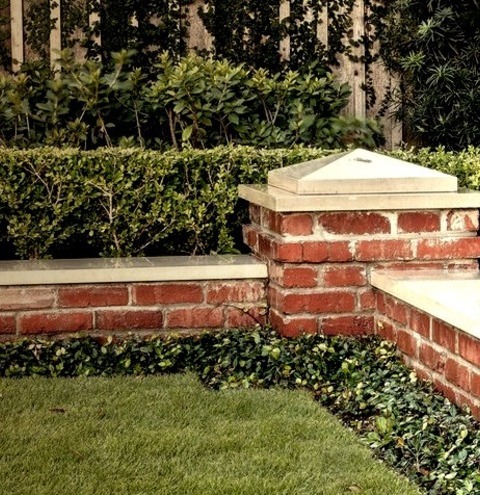
Houston Backyard Ideas for brick landscaping in a medium-sized traditional backyard that receives full sun.
0 notes
Photo
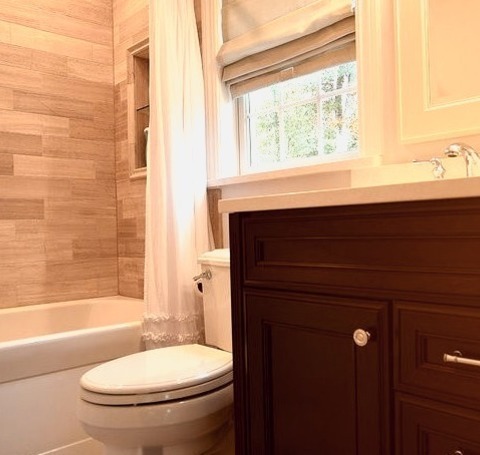
Traditional Bathroom New York Inspiration for a small timeless kids' gray tile and limestone tile limestone floor and gray floor bathroom remodel with raised-panel cabinets, dark wood cabinets, a two-piece toilet, gray walls, an undermount sink and quartz countertops
0 notes
Text
How to Make the Right Choice with Plastering Services Near Me?
When it comes to enhancing the appearance and durability of your walls, ceilings, or any other plastered surface in your home or business, choosing the right plastering service is crucial. But with numerous options available, how can you ensure you're making the best choice for your needs? In this comprehensive guide, we'll walk you through the essential steps to make an informed decision when searching for "plastering services near me." By the end, you'll be well-equipped to hire the right professional plasterer fremantle for your project.
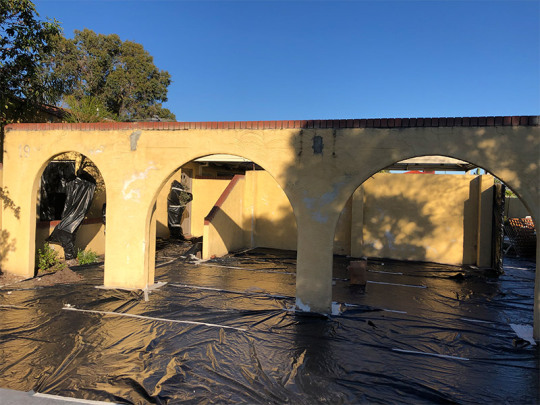
Assess Your Needs
The first step in finding the appropriate plastering service is understanding your requirements. Consider the following:
Scope of Work: Determine whether you need plastering for a single room, an entire house, or a commercial space. Knowing the scope will help you narrow down your options.
Type of Plastering: Identify the type of plastering you need, such as traditional plaster, drywall, or specialized finishes like Venetian plaster.
Budget: Determine your budget range for the project. It will guide your decision-making process and help you identify suitable providers.
Research Plastering Services Near You
Now that you've defined your needs, it's time to start your search for plastering services in your area. Here's how:
Online Search: Use search engines and online directories to find local plastering services. Include your location in the search query, like "plastering services near me."
Ask for Recommendations: Seek recommendations from friends, family, or colleagues who have recently had plastering work done. Personal referrals can be invaluable.
Check Reviews: Look for online reviews and ratings on platforms like Google, Yelp, or Angie's List. Reading experiences from previous customers can provide valuable insights.
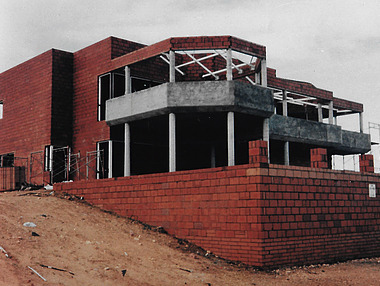
Verify Credentials and Experience
Once you have a list of potential plastering services, it's essential to verify their credentials and experience. Here's what to look for:
Licensing and Insurance: Ensure that the plastering service is licensed and insured. It protects you in case of accidents or damages during the project.
Experience: Check how long the company has been in business and inquire about their experience with projects similar to yours.
Portfolio: Ask for a portfolio of their previous work. It can give you a visual representation of their skills and quality of craftsmanship.
Request Multiple Quotes
To make an informed decision, obtain quotes from several plastering services. When requesting quotes, keep the following in mind:
Detailed Scope: Provide a detailed description of the work you need to be done. The more information you provide, the more accurate the quotes will be.
Materials and Techniques: Ask each service about the materials and techniques they plan to use. It will help you compare their proposed approaches.
Timeline: Inquire about the estimated timeline for completing the project. Ensure it aligns with your schedule.
Check References
Before finalizing your decision, ask for references from the plastering services you're considering. Contact previous clients and ask about their experiences, including:
Quality of Work: Did the plastering service deliver high-quality work?
Communication: How well did the service communicate throughout the project?
Adherence to Schedule: Did they complete the project within the agreed-upon timeline?

Review Contracts Carefully
When you've selected a plastering service, it's time to review the contract thoroughly. Ensure it includes the following:
Scope of Work: A detailed description of the work to be done, including materials, techniques, and any specific requests.
Timeline: A clear timeline for project completion with milestones if necessary.
Payment Terms: An outline of payment terms, including deposit requirements and the schedule for instalment payments.
Warranty/Guarantee: Any warranties or guarantees provided by the plastering service.
Communication is Key
Throughout the project, maintain open and clear communication with the plastering service. It includes:
Updates: Regular updates on the progress of the project.
Issues: Promptly addressing any concerns or issues that arise during the project.
Changes: Discuss any changes or modifications to the original scope of work and obtain written agreements if necessary.
Monitor the Work
While the plastering service is at work, keep an eye on the progress and quality of the work. If something doesn't meet your expectations, address it immediately to ensure it's corrected promptly.
Final Inspection and Payment
Once the project is completed to your satisfaction, conduct a final inspection with the plastering service. Ensure that all work meets the agreed-upon standards before making the final payment.

Leave a Review
After the project is successfully done, consider leaving a review online. Share your experience to help others make informed decisions when searching for plastering services near them.
In conclusion, finding the right plastering services near me involves careful research, clear communication, and thorough evaluation of credentials and work quality. By following these steps, you can confidently choose a plastering service that meets your needs and ensures the beauty and longevity of your plastered surfaces.
0 notes
Photo

Chicago Traditional Bedroom An illustration of a sizable, traditional master bedroom with dark wood floors, beige walls, a regular fireplace, and a stone fireplace.
#king bed#single family luxury residence#master#city home#lincoln park chicago#bedroom#brick limestone facade
0 notes
Photo
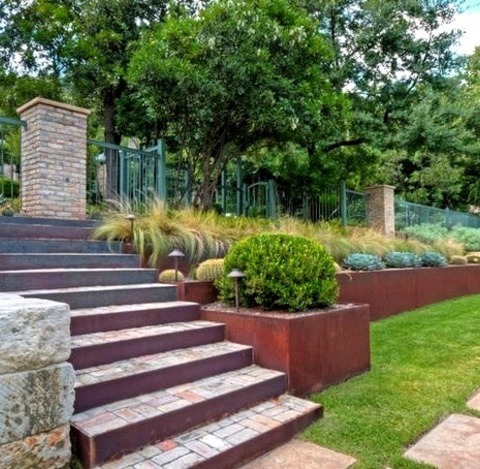
Natural Stone Pavers Front Yard in Austin An example of a large modern drought-tolerant and full sun front yard stone retaining wall landscape in spring.
0 notes
Photo

Bathroom - Traditional Bathroom Inspiration for a small, classic kids' bathroom remodel with gray walls, an undermount sink, quartz countertops, raised-panel cabinets, dark wood cabinets, a two-piece toilet, and limestone tile.
0 notes